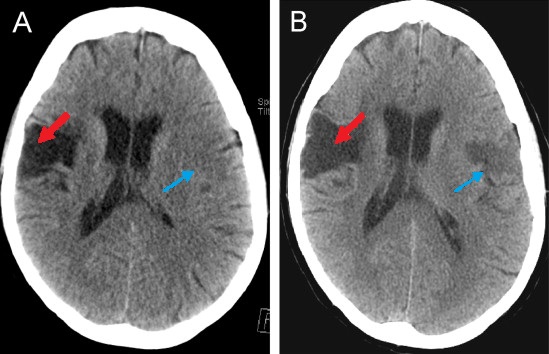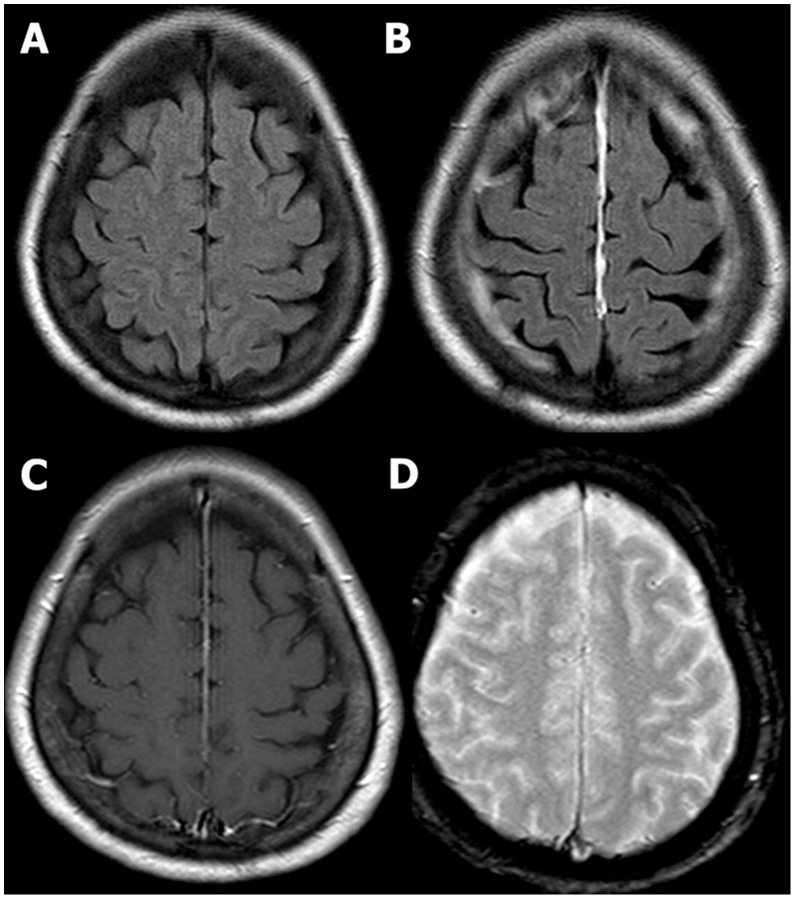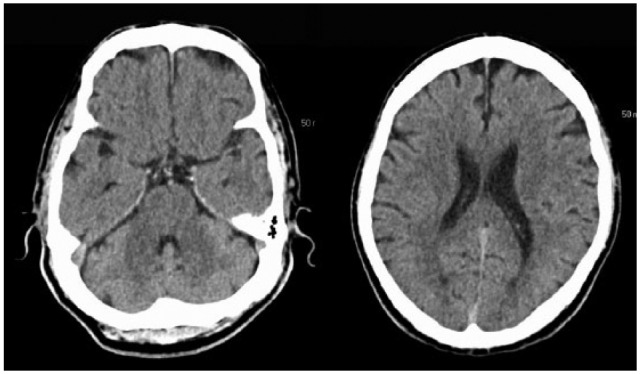Playlist
Show Playlist
Hide Playlist
Acute Ischemic Stroke (AIS): Management
-
Emergency Medicine Bord Acute Ischemic Stroke.pdf
-
Download Lecture Overview
00:01 A key thing in management is thinking about the blood pressure. 00:04 Now, again, like I've mentioned, and we're trying to figure out whether or not our patient is a candidate for the thrombolytic therapy. 00:12 If our patient is not getting thrombolytic therapy, you don’t wanna treat the blood pressure unless the systolic blood pressure is greater than 220 or the diastolic blood pressure is greater than a 120, or the mean arterial pressure is greater than 130. 00:27 Now the reason for that is always seems a little bit contra - like contraindicatory for some people. 00:32 But the reason that we think about it is because if you can imagine if you have a clot in your vessel, we actually want the blood pressure in a patient who's not getting the TPA medication to run a little bit higher. 00:44 And the reason that we want that is because if you drop the blood pressure too much or too suddenly, then, that person can get no blood flow through that vessel. 00:53 So what the body is doing physiologically is our bodies are increasing the blood pressure in order to compensate for that blockage that’s there. 01:02 Now if you're giving thrombolytic therapy, you want to treat the blood pressure at slightly lower numbers. 01:08 And the reason that we do this is because our goal is to then prevent the stroke area from turning into hemorrhage, from turning into an area of bleeding, so we wanna really recommend stricter blood pressure control. 01:21 So we treat the blood pressure if the systolic blood pressure is greater than a 185 or the diastolic blood pressure is greater than a 110. 01:29 The medications that are most commonly given are labetalol or nicardipine and the reason that we give these medications is because they are relatively easily titratable so we can turn the levels up or down ever so slightly in order to control the blood pressure, just the right amount, cuz like I mentioned we wanna avoid hypotension, we wanna avoid that blood pressure from getting too low because if the blood pressure gets too low, that person can develop even more severe stroke symptoms. 01:59 So I've talked a lot about TPA and thrombolytic therapy here. 02:05 It's important to know that there are strict inclusion and exclusion criteria for TPA. 02:10 They are not all mentioned here on the slide but they include blood pressure, they include anticoagulation, they include what the NIH stroke scale is because we know that patients that have too low of a number and then again patients who have a too high of a number so an area of stroke that’s too big actually can have bad outcomes if when they get TPA. 02:31 It's important to note that time is brain. 02:34 The treatment window for TPA is three hours and then the window has been expanded a little bit up to four and a half hours but there's more exclusion criteria when we extend that window to four and a half hours, so, there's more people that can get it the sooner they present to the hospital, so if you come in three hours, the exclusion criteria are less. 02:57 The treatment decision is based on NIH stroke scale, the severity of disability without treatment and the age of the patient among other criteria. 03:07 It’s important to have mentioned the severity of disability because there are certain things that would make someone very disabled so for instance, if they're not able to speak, even if they don’t have a lot of other neurologic findings, not being able to speak or see is a very traumatic thing and can very severely disable someone so we always take that in mind when we're deciding whether or not to use the medication. 03:29 You know it's important to note that there are a lot of risks associated with giving TPA. 03:35 The most major risk is that the area of stroke can convert to a hemorrhagic stroke and can actually be quite large. 03:43 And when that area of stroke converts to a hemorrhagic stroke, it can have very severe consequences for our patient. 03:49 So whenever you're deciding whether or not to give TPA, the other component here is you need to make sure that you consent your patient and or their family member if your patient is not able to consent. 03:59 So what that means is talking to them about the benefits, the potential benefits as well as the potential risks to giving this medication. 04:06 And the medication can definitely help and benefit a lot of people. 04:09 We need to make sure that we are clearly communicating with patients that there are definitely risks associated with this and risks involved. 04:17 The latest and greatest in stroke therapy is endovascular therapy and can offer some additional benefits for certain selected stroke patients. 04:28 You know this is a newer technology and the devices are getting newer and more advanced all the time and they are essentially retrievable stents that can be placed in and mechanisms that can remove and suck out the clot. 04:42 Before a patient can get this they need vessel imaging prior to the procedure. 04:48 That's generally accomplished with the CT angio of the head or the CT angiogram of the head where you can get a closer look at the blood vessels. 04:56 The people who have been found to benefit from this most are patients who have large vessel occlusions in the anterior circulation, so in the front portion of the circulatory system of the brain. 05:09 The earlier this is performed the better results. 05:12 This is only performed at certain facilities as well so it's also important to know the capabilities of your facility and potentially a fewer facility doesn’t have the capability to perform this, your patient may benefit from transfer to a facility that does. 05:29 So the conclusion here are that ischemic strokes are common and can be associated with significant disability. 05:36 It’s important to expedite workups for patients presenting with TIA due to the fact that they have an increased risk of stroke especially early on after those first TIA symptoms. 05:47 Evaluation of patients presenting with stroke symptoms is an emergent non-contrast head CT, so that is a CT scan without contrast, a focus neurologic exam and then determining that symptom onset. 05:59 Treatment of acute ischemic stroke consists of blood pressure control and then consideration for administration of TPA.
About the Lecture
The lecture Acute Ischemic Stroke (AIS): Management by Sharon Bord, MD is from the course Neurologic and Psychiatric Emergencies.
Included Quiz Questions
For patients with acute ischemic stroke, who receive thrombolytic therapy, the recommendation for antihypertensive treatment is to maintain...
- ...diastolic blood pressure ≤ 110 mmHg.
- ...systolic blood pressure ≤ 220 mm Hg.
- ...diastolic blood pressure ≤ 90 mm Hg.
- ...systolic blood pressure is ≤ 160 mmHg.
- ...diastolic blood pressure ≤ 130 mm Hg.
Which of the following drugs is a first choice in the treatment of blood pressure in a patient with ischemic stroke who is a candidate for thrombolytic therapy?
- Nicardipine
- Metoprolol
- Hydrochlorothiazide
- Atenolol
- Losartan
Which of the following patients with stroke may be a candidate for thrombolytic therapy?
- A 59-year-old man with a history of gastrointestinal hemorrhage 6 months ago and ischemic stroke for 3 hours
- A 67-year-old man with ischemic stroke for 12 hours
- A 72-year-old woman with a history of hemorrhagic stroke and ischemic stroke for 2 hours
- A 54-year-old man with hemorrhagic stroke for 3 hours
- A 48-year-old woman with atrial fibrillation and ischemic stroke for 8 hours
What is the extended window period for administering thrombolytic therapy in patients with acute ischemic stroke?
- 4.5 hours
- 12 hours
- 2 hours
- 3 hours
- 24 hours
Which of the following statements regarding endovascular therapy is FALSE?
- The patients do not require vessel imaging prior to the procedure.
- It involves newer technology and devices.
- The stents are retrievable.
- It yields better results when performed early.
- It is more effective in large vessel occlusions.
Customer reviews
5,0 of 5 stars
| 5 Stars |
|
5 |
| 4 Stars |
|
0 |
| 3 Stars |
|
0 |
| 2 Stars |
|
0 |
| 1 Star |
|
0 |






